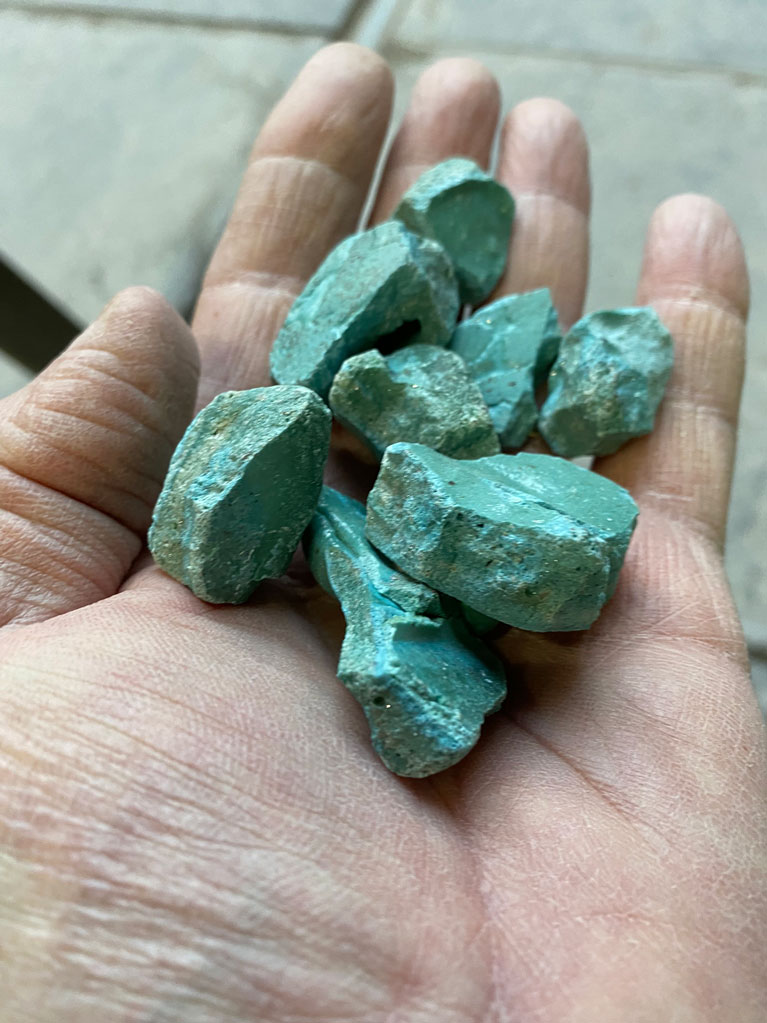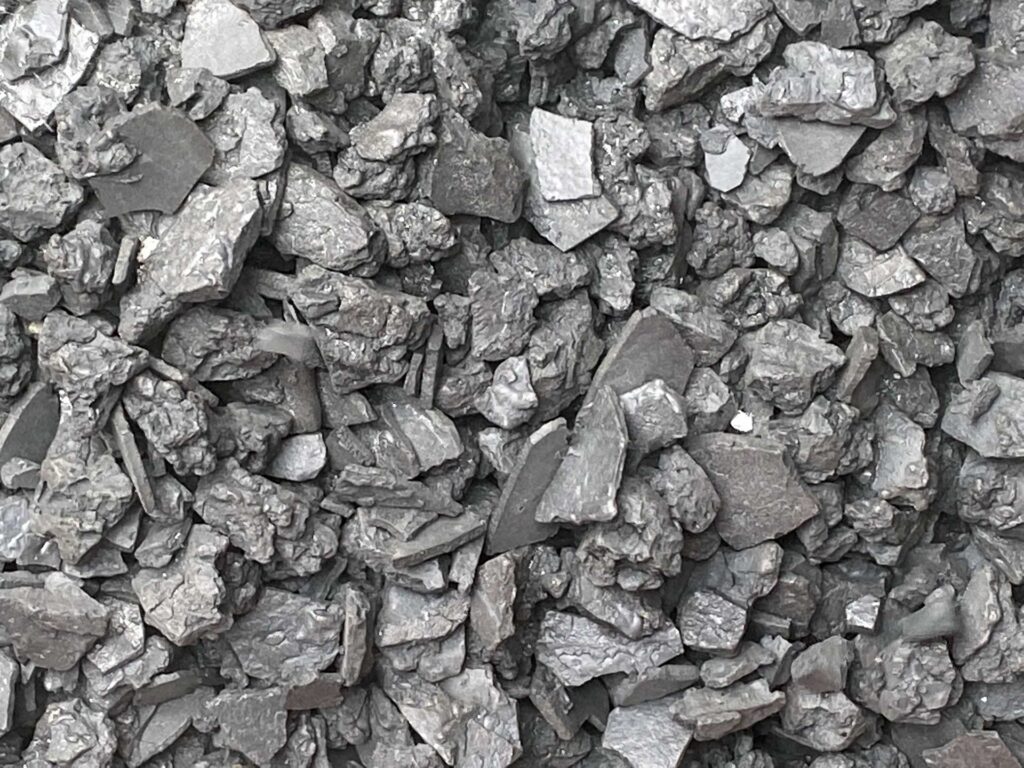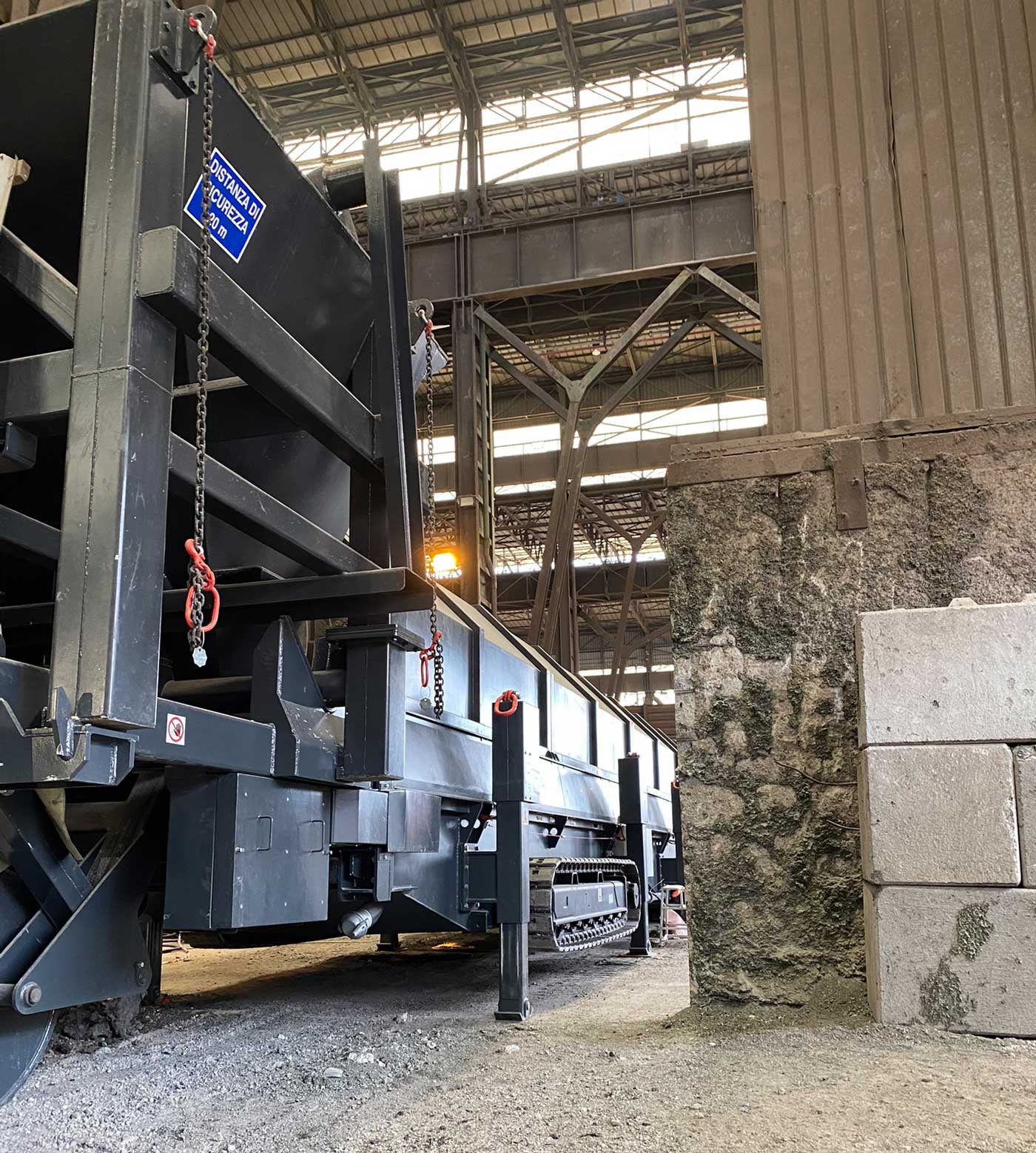until the best objectively becomes the solution
that everyone would have adopted.


After refining steel, residues (slag) remain at the bottom of the ladle. In commonly used practices, up to 12 distinct phases are counted, including material movement from the hot area, cooling in designated zones, recovery of steel residues, transfer to appropriate zones with subsequent material stabilization, and, finally, after specific handling, transport, and unloading, the final inertization.
Lime can react and form aggregates that, during the cooling process, can go through up to six phases depending on the temperature, i.e., six distinct physical transformations, until reaching the most stable one. Lime can react and form aggregates that, during the cooling process, can go through up to six phases depending on the temperature, i.e., six distinct physical transformations, until reaching the most stable one.
This process can take several months and can lead to a volume increase when the material is exposed to air, causing the phenomenon of pulverization.

Lime also attacks the lid cap formed in the EAF smelting furnace, forcing operators to keep and maintain the same ladle in a specific and dedicated place even for several months.
So our solution:

Slag management is optimized through a single machinery that entirely replaces 12 operational phases and at least 10 vehicles, including transportation and labor. This solution allows for the regeneration of lime for new uses in furnaces or external markets, significantly reducing CO₂ emissions and generating EU-ETS credits. This way, the flow of material destined for landfills is interrupted, and lime-free steel and other contaminants are recovered.
A single machine replaces 12 operational phases and at least 12 vehicles for transportation and labor.
Once lime is crystallized, the output product is already sorted, eliminating the need for screening and/or crushing plants, and consequently, storage times are reduced to zero
The above highlights the possibility of adopting an alternative to current market ‘best practices.’
The results of the proposed solution reveal a drastic reduction (estimated at over 99%) in the pulverization capacity of the so-called ‘white slag,’ with significant impacts on the scale of dedicated logistics (over 50% reduction). Additionally, there is a high decrease in the use and consumption of water resources (estimated at over 95%) and a significant decrease in movement of the materials within and outside the plant perimeter (estimated at over 50%)
We estimate the impact on improving exposure to HEALTH and SAFETY risks by over 50%.
WBST implements innovative, patented solutions aimed at regenerating ladle furnace slags (steel refining) and providing controlled atmosphere cooling for the cap lids of EAF furnaces (steel melting). The objective, in the latter case, is to obtain a product that is already pre-selected and free from lime residues, making it immediately suitable for market.
Through the exclusive Re+Gen® technology,the WBST cooling system crystallizes the typical elements of ladles funds into an aggregate composed mainly by lime, aluminates, and silicates optimized for the specific processes of each steel mill. This aggregate is ready to be introduced, in most cases, as a replacement for calcic and dolomitic lime, into the EAF smelting furnace or LF refining furnace.
The processing timing is identical to the TAP to TAP of the EAF furnace, with a complete absence of dust. This process is a candidate to become the next BAT parameter, positively contributing to the steel mill’s revenue. Moreover, it completely eliminates the environmental concerns associated with ladle slag and furnace cap lids management, significantly enhancing the sustainability criteria of the entire steel mill.
WBST is the licensee and owner of international patents extended to all steel-producing countries.
White Black Slag Technology S.r.l.
Vicolo XX Settembre, 11/2 – 31100 Treviso
C.F. / VAT number / I.R.I. 04988140267- REA-TV-417782
Capitale Sociale Euro 20.000.000,00
versato Euro 1.500.000,00 – termine aumento 30/06/2025.

WBST implements innovative, patented solutions aimed at regenerating ladle furnace slags
(steel refining) and providing controlled atmosphere cooling for the cap lids of EAF furnaces (steel melting). The objective, in the latter case, is to obtain a product that is already pre-selected and free from lime residues, making it immediately suitable for market.